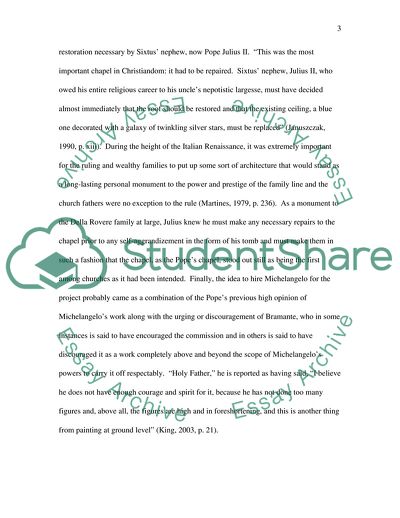Cite this document
(Michelangelos Process in Creating the Sistine Chapel Term Paper, n.d.)
Michelangelos Process in Creating the Sistine Chapel Term Paper. https://studentshare.org/performing-arts/1706157-art-history-the-fresco-series-painted-in-1481-82-in-the-sistine-chapel-rome
Michelangelos Process in Creating the Sistine Chapel Term Paper. https://studentshare.org/performing-arts/1706157-art-history-the-fresco-series-painted-in-1481-82-in-the-sistine-chapel-rome
(Michelangelos Process in Creating the Sistine Chapel Term Paper)
Michelangelos Process in Creating the Sistine Chapel Term Paper. https://studentshare.org/performing-arts/1706157-art-history-the-fresco-series-painted-in-1481-82-in-the-sistine-chapel-rome.
Michelangelos Process in Creating the Sistine Chapel Term Paper. https://studentshare.org/performing-arts/1706157-art-history-the-fresco-series-painted-in-1481-82-in-the-sistine-chapel-rome.
“Michelangelos Process in Creating the Sistine Chapel Term Paper”. https://studentshare.org/performing-arts/1706157-art-history-the-fresco-series-painted-in-1481-82-in-the-sistine-chapel-rome.


